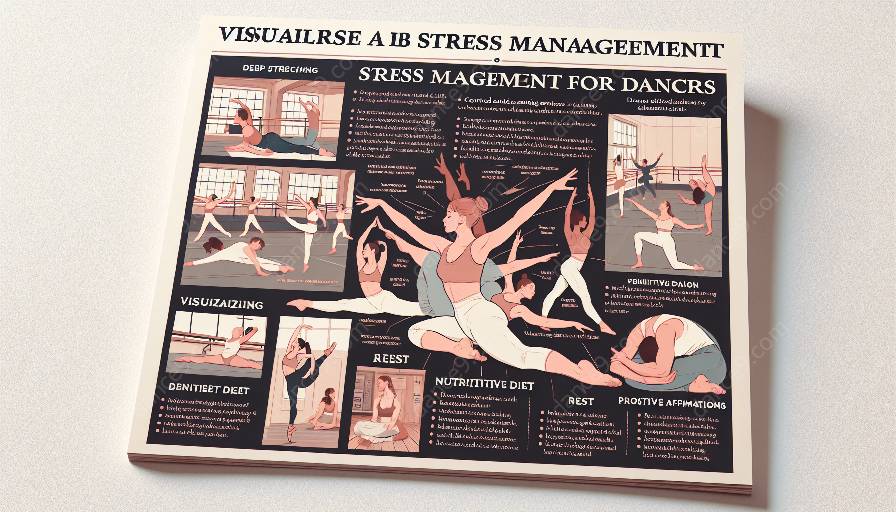Dance is a powerful form of self-expression and artistry, but the demands placed on dancers can often lead to stress and physical strain. It's essential for dancers to prioritize self-care and stress prevention to maintain their physical and mental well-being.
Understanding the Importance of Self-Care and Stress Prevention for Dancers
Dancers face unique challenges related to their physical and mental health. Long hours of practice, performance pressures, and the physical demands of dance routines can take a toll on a dancer's well-being. To maintain peak performance and prevent burnout, implementing effective self-care and stress prevention strategies is crucial.
Best Practices for Self-Care and Stress Prevention in the Dance Community
There are several best practices that dancers can embrace to promote self-care and prevent stress:
- 1. Mindfulness and Relaxation Techniques: Incorporating mindfulness and relaxation techniques, such as meditation and deep breathing, can help dancers manage stress and stay present in their performances.
- 2. Proper Nutrition and Hydration: Maintaining a balanced diet and staying properly hydrated are essential for dancers to sustain their energy levels and support their physical health.
- 3. Adequate Rest and Recovery: Dancers must prioritize adequate rest and recovery to allow their bodies to repair and prevent overexertion and injury.
- 4. Mental Health Support: Seeking mental health support, such as therapy or counseling, can be beneficial for dancers to cope with performance anxiety and emotional challenges.
- 5. Injury Prevention and Rehabilitation: Dancers should engage in injury prevention strategies and seek timely rehabilitation to avoid long-term physical and mental impacts of injuries.
- 6. Balancing Work and Personal Life: Maintaining a healthy work-life balance is crucial for dancers to prevent burnout and maintain overall well-being.
Implementing Stress Management Techniques for Dancers
In addition to self-care practices, integrating effective stress management techniques can help dancers navigate the pressures of their profession:
- 1. Time Management and Prioritization: Organizing practice schedules and prioritizing tasks can help dancers manage their time effectively and reduce stress related to deadlines and expectations.
- 2. Physical Activity and Conditioning: Engaging in complementary physical activities and conditioning exercises can help dancers build strength, flexibility, and endurance while reducing stress.
- 3. Stress-Relief Exercises: Incorporating stress-relief exercises, such as yoga, tai chi, or Pilates, can aid in stress reduction and promote physical well-being.
- 4. Open Communication and Support Networks: Building a supportive community and fostering open communication can provide dancers with the emotional support needed to manage stress effectively.
- 5. Setting Realistic Goals and Expectations: Establishing realistic goals and managing expectations can help prevent performance-related stress and maintain a healthy perspective on achievements.
- 6. Seeking Professional Guidance: Accessing professional guidance from coaches, trainers, and mental health professionals can offer valuable insights and support for dancers facing stress-related challenges.
Embracing Physical and Mental Health in Dance
Overall, promoting physical and mental health within the dance community requires a holistic approach that prioritizes self-care, stress prevention, and the well-being of dancers. By incorporating these best practices and stress management techniques, dancers can sustain their passion for dance while safeguarding their health and performance.


































